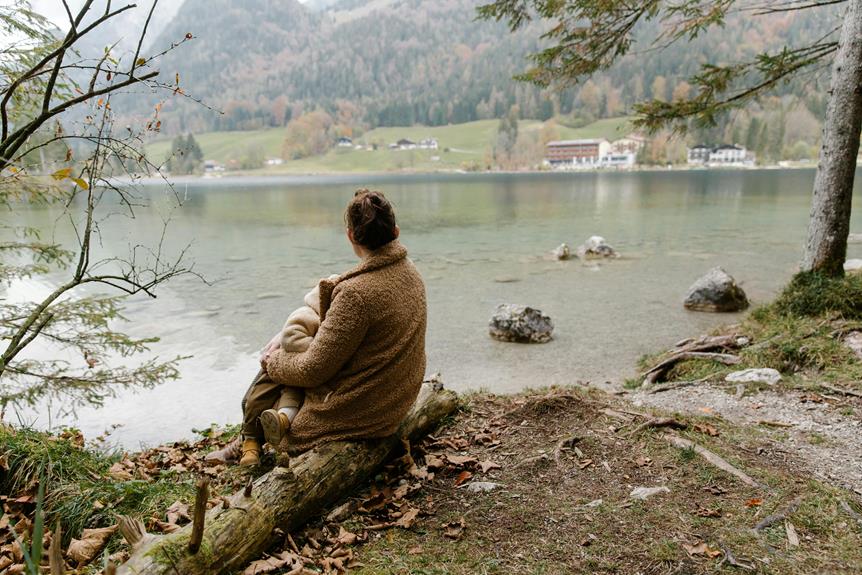
Blog
What Are Some Tips for Dressing Baby According to Weather Conditions?

When dressing your baby according to weather conditions, make sure to dress them in light, breathable fabrics like cotton for hot weather. Opt for loose-fitting clothing for ventilation and don't forget to protect their skin with hats, sunglasses, and sunscreen. In colder temperatures, layer up with insulating fabrics like wool or fleece starting with a long-sleeved onesie and adding warm sweaters or jackets. Dressing your baby appropriately ensures their comfort and safety throughout the day.
Dressing Baby in Hot Weather
When it's scorching outside, make sure to dress your baby in light, breathable fabrics to keep them cool and comfortable. Opt for cotton or other natural materials that allow air circulation and prevent overheating. Avoid synthetic fabrics that can trap heat and moisture, leading to discomfort for your little one.
Choose loose-fitting clothing to promote ventilation and prevent skin irritation. Onesies, rompers, or dresses made of lightweight fabrics are great choices for hot weather. Remember to protect your baby's delicate skin from the sun by using hats, sunglasses, and applying baby-safe sunscreen.
It's essential to keep your baby hydrated in hot weather, so offer breast milk, formula, or water frequently. Dress your baby in minimal layers to prevent overheating, and avoid covering their head while indoors to regulate body temperature effectively.
Dressing Baby in Cold Weather
To keep your baby warm and cozy in cold weather, choose insulating layers made of wool or fleece. Start with a soft, long-sleeved onesie as a base layer to keep your baby's skin protected.
Over the onesie, add a warm sweater or a fleece jacket to provide extra warmth. Opt for pants made of thick material like corduroy or fleece to keep your baby's legs insulated.
Don't forget to cover your baby's feet with wool socks or booties to prevent heat loss. A hat that covers your baby's ears is essential to retain body heat.
When going outside, wrap your baby in a blanket or a bunting bag for added warmth. Remember to check your baby frequently to ensure they're comfortable and not overheating.
Dressing Baby in Rainy Weather
In rainy weather, dressing your baby in waterproof clothing is key to keeping them dry and comfortable. Opt for a raincoat with a hood to protect their head and a pair of waterproof pants to keep their legs dry. Choose rain boots to keep their feet dry and prevent slipping on wet surfaces. Additionally, consider using a stroller rain cover to shield your baby from the rain while out and about.
It's also important to dress your baby in layers underneath the waterproof gear to ensure they stay warm. Lightweight, moisture-wicking fabrics are ideal as they help regulate body temperature and keep your baby dry. Avoid heavy, bulky layers that can become waterlogged and uncomfortable.
Remember to pack an extra set of dry clothes in case your baby does get wet. This way, you can quickly change them into warm, dry attire to prevent any discomfort or chill. By dressing your baby appropriately for rainy weather, you can ensure they stay cozy and content even when it's wet outside.
Dressing Baby in Windy Weather
In windy weather, ensure your baby is dressed in wind-resistant clothing to protect them from the cold gusts. Choose clothing that isn't too loose to prevent it from getting caught in the wind. Opt for items like windbreaker jackets, hoodies, or coats that can shield your baby from the chilling effects of the wind.
Additionally, consider dressing your baby in layers to provide extra warmth and insulation. Make sure to secure any hats or hoods to prevent them from blowing off in the wind.
When dressing your baby for windy weather, also remember to cover their hands and feet. Use mittens or gloves to protect their tiny fingers from getting too cold, and opt for warm socks or booties to keep their feet cozy. If the wind is particularly strong, you may also want to use a stroller cover or a blanket to create a barrier against the gusts.
Dressing Baby in Variable Weather
When facing variable weather conditions, be prepared to adjust your baby's clothing accordingly to ensure their comfort and well-being. Layering is key in fluctuating weather; dress your baby in breathable fabrics like cotton that can be easily added or removed as needed.
Start with a onesie or a light base layer and then add a sweater or jacket for cooler moments. Opt for items that can be easily tied around the waist or stored in a diaper bag when not in use. Additionally, hats and mittens are great accessories to have on hand to protect your baby from sudden temperature changes.
Keep an eye on your baby's cues like shivering or flushed cheeks, as these can indicate that they're too hot or too cold. By being prepared with versatile clothing options, you can ensure that your baby stays comfortable and happy regardless of the weather outside.
